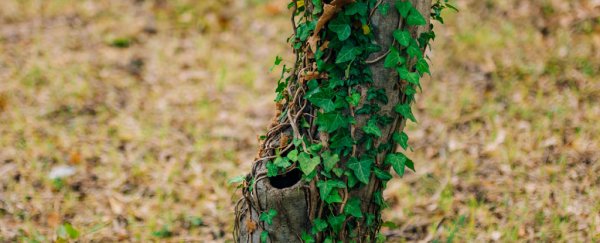According to the first global analysis of plant diversity, the world's flora is growing increasingly uniform, even on isolated islands like Australia.
For decades now, scientists have been warning the world we are headed for a new geological epoch, called the 'Homogecene', when unique life forms become overshadowed by more adaptable species that can live alongside humans.
The new research on flowering plants reveals the extent to which that may already be happening to some flora.
"These effects are now evident even in the most remote corners of the world," says ecologist Mark van Kleunen from the University of Konstanz in Germany.
"Unless more effective protective measures are taken to counter the ongoing spread and naturalization of alien plants in the future, they will continue to destroy the uniqueness of our ecosystems—making the world a less diverse place."
This destruction of ecosystems is largely thanks to us. Humans have collapsed the distance between ecoregions worldwide, and some scientists are concerned that the loss of natural barriers could one day create a 'New Pangaea'.
Instead of solid land connecting all the major continents and their flora and fauna, the bridge this time will be us. On our backs already flow numerous super-invaders, ready to take over new territory and displace native species.
Their domination has begun.
Blackberries, for example, growing feral in Australia, impact at least 47 threatened species through reduction of habitat and by providing shelter to other introduced predators and competing species. They cost hundreds of millions of dollars in damage and containment attempts.
Stronger biosecurity measures for human trade and transport could help protect the native vegetation that's left on our planet for hotspots like Australia and other Pacific islands.
Isolated nations like these are home to many unique endemic species, and yet because these life forms have evolved to suit a very specific ecological niche, they are least likely to adapt to a rapidly changing world.
Drawing on floral data from 658 regions around the world, including 189,762 flowering-plant species, researchers have now broadly compared how native flowers are coping compared to invasive flowers.
Over time, their findings suggest geographically distant plants have become less distinct from one another due to the introduction of invasive species.
Ultimately, the authors found alien plants are more likely to become naturalized in a distant environment when the climate, and especially the temperature, is similar to their last home.
Rainfall, on the other hand, didn't seem to influence plant uniformity nearly as much. This suggests many invasive plants are weeds, thriving on agricultural lands and along rivers.
"The more similar two regions are in terms of climate, the more likely it is that a plant from one region will succeed in establishing itself as a naturalized species in the other region, once geographic barriers have been crossed," explains ecologist Qiang Yang, also from the University of Konstanz.
"In a sense, plants from a region with short climatic distance to their new habitat are climatically pre-adapted."
Those regions of the world that share the same current or past political administrations also have relatively uniform flora.
This is likely because human trade and transport are much more common between states in a nation, nations in a union, or historic colonial networks.
At one point, for instance, the British global empire had set up 126 botanical gardens around the world, all of which exchanged plant species.
Similarly, European colonizers brought many alien species to Australia, which is probably why this region of the world is such a hotspot for homogenization.
Today, invasive alien plants in Australia number in the thousands, and each year about 20 new species are added to the list, displacing even more native plants and altering natural habitats.
The ecological, evolutionary, and socioeconomic consequences of all this change remain unclear. Still, given how important biodiversity appears for local ecosystems, the arrival of a 'New Pangaea' could be very destructive.
Previous studies suggest the last time a supercontinent existed on Earth, it increased the cosmopolitanism of global fauna and led to mass extinctions, causing homogenous 'disaster faunas' to take over.
There's no reason why it couldn't happen again.
The current analysis is a rough estimate of how much homogeneity has already occurred among flowering plants, but far more research is needed to determine how uniform the entire biosphere has become and why.
Only then will we know what needs to be done to save it.
The study was published in Nature Communications.
